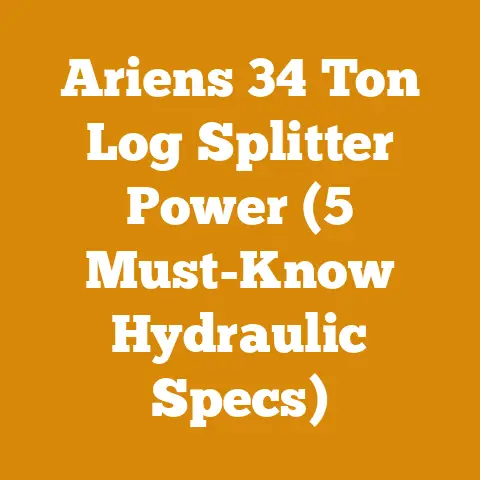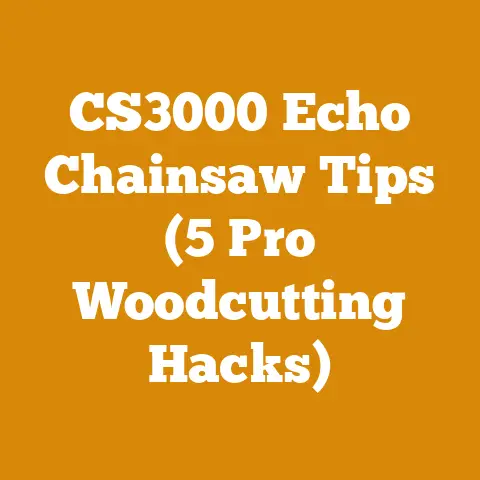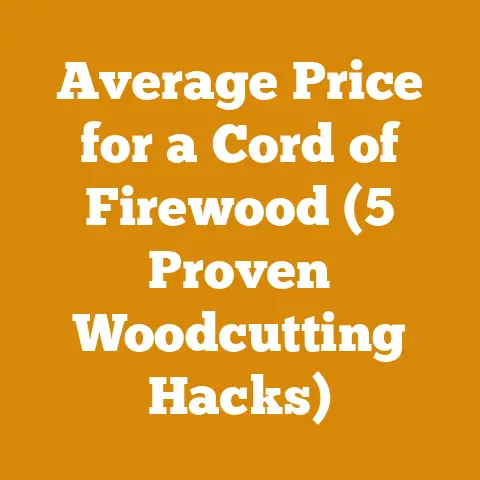Stump Root Grinding Techniques (5 Pro Tips for Safe Removal)
Stump Root Grinding Techniques (5 Pro Tips for Safe Removal)
1. Assessing the Stump and Planning Your Attack
Before you even think about firing up a stump grinder, take the time to assess the situation. This isn’t just about looking at the stump; it’s about understanding the entire root system and the surrounding environment.
- Stump Size and Species: A small maple stump is a different beast than a massive oak. The diameter and wood density significantly impact grinding time and the type of grinder you’ll need. Harder woods like oak and hickory will dull grinder teeth faster and require more power.
- Root System: Is the stump relatively isolated, or are there large surface roots extending out in all directions? Knowing the root structure helps you plan your grinding pattern.
- Proximity to Structures: Are there fences, buildings, or underground utilities nearby? This is critical. Grinding near utilities is incredibly dangerous and requires calling your local utility company to mark the lines. Hitting a gas line is not a fun experience, trust me. I’ve seen it happen, and the consequences are severe.
- Soil Type: Sandy soil is easier to grind than rocky soil. Rocks can damage grinder teeth and create hazardous projectiles.
- Obstacles: Are there rocks, metal objects, or buried debris around the stump? A thorough inspection is essential to avoid damage and injury. I once spent an hour digging around a stump only to uncover an old metal fence post buried right next to it. Lesson learned: always check!
Cost Considerations (Assessment Phase):
- Utility Marking: This is a free service in most areas, but it’s absolutely essential. Never skip this step. The cost of not doing it could be your life.
- Metal Detector Rental: If you suspect buried metal, renting a metal detector is a worthwhile investment. Expect to pay around $20-$50 per day for a basic model. I consider this a risk mitigation cost, and it’s cheap insurance.
2. Gear Up for Safety: Protecting Yourself and Your Surroundings
Stump grinding is inherently dangerous. Flying debris, loud noise, and the potential for kickback make safety gear absolutely non-negotiable.
- Eye Protection: Wear safety glasses or a full-face shield. Small wood chips and rocks can easily cause eye injuries.
- Hearing Protection: Stump grinders are loud. Use earplugs or earmuffs to protect your hearing. Prolonged exposure to loud noise can cause permanent hearing damage.
- Gloves: Heavy-duty work gloves protect your hands from splinters and abrasions.
- Long Pants and Sturdy Boots: Protect your legs and feet from flying debris. Steel-toed boots are recommended.
- Dust Mask or Respirator: Grinding creates a lot of dust, which can irritate your lungs. A dust mask is sufficient for short jobs, but a respirator is recommended for prolonged use.
- Clear the Area: Establish a safety zone around the stump and keep bystanders away. Flying debris can travel a considerable distance.
Cost Considerations (Safety Gear):
- Safety Glasses: $10-$30
- Hearing Protection: $10-$50
- Gloves: $15-$40
- Dust Mask/Respirator: $5-$50 (depending on type)
I always tell people, “Invest in safety, or you’ll pay the price later.” A minor injury can quickly turn into a major medical bill, not to mention the pain and inconvenience.
3. Mastering the Grinding Technique: A Step-by-Step Approach
Now for the fun part (or the hard work, depending on your perspective). Here’s a breakdown of the grinding process:
- Start at the Perimeter: Begin by grinding around the outer edge of the stump, working your way inward. This creates a trench that allows you to grind deeper.
- Sweep Slowly and Steadily: Avoid forcing the grinder. Let the teeth do the work. Sweep the grinder back and forth in a controlled motion.
- Grind in Layers: Don’t try to remove too much material at once. Grind in shallow layers, gradually working your way down.
- Address Surface Roots: Once you’ve ground the main stump down to the desired level (typically 4-6 inches below ground level), focus on the surface roots. Grind them down as far as possible.
- Backfill and Compact: Once you’re satisfied with the grinding, backfill the hole with soil and compact it firmly.
Cost Considerations (Grinding Technique):
- Stump Grinder Rental: This is the biggest expense. Expect to pay around $100-$300 per day, depending on the size and power of the grinder. Renting by the hour might be cheaper for smaller stumps.
- Fuel: Stump grinders typically use gasoline. Factor in the cost of fuel based on the grinder’s fuel consumption and the duration of the job.
- Consumables: Grinder teeth wear down over time, especially when grinding hard woods or encountering rocks. Some rental companies charge extra for tooth replacement, so be sure to clarify their policy.
I’ve found that renting a grinder for a full day, even if I don’t need it for the entire time, is often more economical than renting by the hour. Plus, it gives me the flexibility to take breaks and not feel rushed.
4. Choosing the Right Stump Grinder: Power and Maneuverability
The type of stump grinder you need depends on the size and number of stumps you’re dealing with. There are three main types:
- Handheld Stump Grinders: These are small, lightweight, and relatively inexpensive. They’re suitable for small stumps and tight spaces, but they lack the power for larger jobs.
- Tow-Behind Stump Grinders: These are more powerful than handheld models and can handle larger stumps. They’re towed behind a vehicle and are a good option for homeowners with multiple stumps.
- Self-Propelled Stump Grinders: These are the most powerful and maneuverable type of stump grinder. They’re typically used by professionals and are ideal for large-scale stump removal projects.
Cost Considerations (Stump Grinder Selection):
- Rental vs. Purchase: For occasional use, renting is almost always the more cost-effective option. Buying a stump grinder is a significant investment, and it requires ongoing maintenance.
- Power and Size: Don’t overbuy. A small grinder will struggle with a large stump, but a large grinder might be overkill for a few small stumps. Match the grinder to the job.
- Features: Look for features like adjustable grinding depth and a rotating head, which can make the job easier.
Before I bought my own property, I always rented. It allowed me to use the best equipment for the specific task without the burden of ownership and maintenance. Now that I have a larger property with more frequent needs, I’m considering purchasing a tow-behind model.
5. Dealing with the Debris: Cleanup and Disposal
Once the grinding is complete, you’re left with a pile of wood chips and soil. Here’s how to handle the cleanup:
- Rake and Remove: Use a rake to gather the wood chips and soil.
- Disposal Options: You have several options for disposing of the debris:
- Composting: Wood chips and soil can be composted and used as mulch in your garden.
- Landscaping: Use the wood chips as a ground cover in flower beds or around trees.
- Disposal: If you can’t reuse the debris, you’ll need to dispose of it at a local landfill or yard waste facility. Check with your local municipality for regulations and fees.
Cost Considerations (Debris Disposal):
- Landfill Fees: Landfill fees vary depending on your location and the volume of debris. Expect to pay around $50-$100 per load.
- Compost Bin: If you plan to compost the debris, you’ll need a compost bin. Compost bins range in price from $50 to $200.
- Labor: If you’re hiring someone to remove the debris, factor in the cost of labor.
I personally prefer to compost the wood chips whenever possible. It’s a sustainable way to dispose of the debris, and it provides valuable mulch for my garden. Plus, it saves me money on disposal fees.
Deep Dive: The Economics of Stump Grinding – A Detailed Cost Breakdown
Let’s break down the costs of stump grinding even further, looking at real-world examples and data.
Scenario 1: Small Stump Removal (DIY)
- Stump Size: 12-inch diameter maple stump
- Location: Residential yard, easily accessible
- DIY or Professional: DIY
Cost Breakdown:
- Stump Grinder Rental (4 hours): $80
- Fuel: $10
- Safety Gear (if needed): $20 (assuming you already have some basics)
- Disposal (composting): $0
- Total Estimated Cost: $110
Scenario 2: Medium Stump Removal (DIY)
- Stump Size: 24-inch diameter oak stump
- Location: Residential yard, some surface roots
- DIY or Professional: DIY
Cost Breakdown:
- Stump Grinder Rental (Full Day): $150
- Fuel: $20
- Safety Gear (if needed): $20 (assuming you already have some basics)
- Disposal (Landfill): $60
- Total Estimated Cost: $250
Scenario 3: Large Stump Removal (Professional)
- Stump Size: 36-inch diameter pine stump
- Location: Difficult access, numerous surface roots
- DIY or Professional: Professional
Cost Breakdown (Estimates based on industry averages):
- Stump Grinding Service: $300 – $600 (depending on location and complexity)
- Debris Removal: $50 – $150
- Total Estimated Cost: $350 – $750
Industry Benchmarks and Statistical Data:
- Average cost of professional stump grinding: $2-$5 per inch of stump diameter. (Source: HomeAdvisor)
- Average hourly rental rate for stump grinders: $30-$75. (Source: Equipment Rental Companies)
- Average landfill fee for yard waste: $50-$100 per ton. (Source: Municipal Waste Management Departments)
Cost Optimization Tips:
- Rent for the Right Duration: Carefully estimate the time required to complete the job and rent the grinder for the appropriate duration.
- Shop Around for Rentals: Compare rental rates from different companies.
- Consider Sharing: If you have neighbors who also need stump removal, consider renting a grinder together.
- Reuse Debris: Compost or use the wood chips for landscaping to avoid disposal fees.
- DIY When Feasible: If you’re comfortable with the task and have the necessary skills, DIY stump grinding can save you a significant amount of money.
Calculations and Formulas:
- Estimating Grinding Time: A general rule of thumb is that it takes approximately 1 hour to grind a 12-inch diameter stump. However, this can vary depending on the wood species, soil type, and the power of the grinder.
- Calculating Debris Volume: Estimate the volume of debris by multiplying the stump diameter by the grinding depth.
Global Perspectives on Stump Removal Costs
Stump removal costs vary significantly across the globe, influenced by factors like labor rates, equipment availability, and local regulations.
- North America: The US and Canada generally have well-established rental markets and readily available professional services. Costs are relatively transparent and competitive.
- Europe: Labor costs tend to be higher in many European countries, making DIY stump grinding a more attractive option. However, rental equipment may be less readily available in some regions.
- Australia: Australia’s vast distances and remote locations can drive up transportation costs for equipment and labor.
- Asia: In some Asian countries, manual labor is relatively inexpensive, making hand digging or other non-mechanical methods of stump removal more common.
Case Studies: Real-World Stump Grinding Projects
Case Study 1: Homeowner in Suburban USA
- Project: Removal of three small maple stumps (8-12 inches diameter) in a residential yard.
- Approach: DIY stump grinding with a rented handheld grinder.
- Total Cost: $150 (rental, fuel, safety gear)
- Savings: Estimated $300 compared to hiring a professional.
Case Study 2: Rural Property Owner in Canada
- Project: Removal of a large oak stump (30 inches diameter) on a rural property.
- Approach: DIY stump grinding with a rented tow-behind grinder.
- Total Cost: $300 (rental, fuel, landfill fees)
- Challenge: Difficult access to the stump required careful maneuvering of the grinder.
Case Study 3: Landscaping Company in Europe
- Project: Removal of multiple tree stumps on a commercial property.
- Approach: Hiring a professional stump grinding service.
- Total Cost: $1,000 (service fee, debris removal)
- Reasoning: High labor costs and the need for specialized equipment made professional service the most cost-effective option.
Actionable Takeaways and Next Steps
- Assess your needs: Determine the size and number of stumps you need to remove.
- Evaluate your skills: Be honest about your ability to safely operate a stump grinder.
- Research your options: Compare rental rates and professional service quotes.
- Prioritize safety: Invest in the necessary safety gear and follow all safety precautions.
- Plan your attack: Develop a detailed plan for grinding the stumps, including the grinding pattern and disposal method.
- Get started: Once you’ve done your research and made your preparations, it’s time to get grinding!
Stump grinding can be a challenging but rewarding task. By following these pro tips and understanding the costs involved, you can safely and effectively remove those unsightly stumps and reclaim your yard. Remember, a little planning and preparation can go a long way in saving you time, money, and potential headaches. And if you ever feel overwhelmed, don’t hesitate to call in the professionals. Sometimes, the best investment is in peace of mind.






